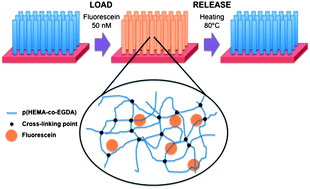Systematic control of mesh size in hydrogels by initiated chemical vapor deposition
Abstract
This investigation has been focused on the development of a cylindrical-shape hydrogel microtube to be used as a biosensor for medical applications.

* Corresponding authors
a
Department of Chemical Engineering, Massachusetts Institute of Technology, Cambridge, Massachusetts, USA
E-mail:
kkg@mit.edu
This investigation has been focused on the development of a cylindrical-shape hydrogel microtube to be used as a biosensor for medical applications.

 Please wait while we load your content...
Something went wrong. Try again?
Please wait while we load your content...
Something went wrong. Try again?
J. L. Yagüe and K. K. Gleason, Soft Matter, 2012, 8, 2890 DOI: 10.1039/C2SM07137A
To request permission to reproduce material from this article, please go to the Copyright Clearance Center request page.
If you are an author contributing to an RSC publication, you do not need to request permission provided correct acknowledgement is given.
If you are the author of this article, you do not need to request permission to reproduce figures and diagrams provided correct acknowledgement is given. If you want to reproduce the whole article in a third-party publication (excluding your thesis/dissertation for which permission is not required) please go to the Copyright Clearance Center request page.
Read more about how to correctly acknowledge RSC content.
 Fetching data from CrossRef.
Fetching data from CrossRef.
This may take some time to load.
Loading related content
